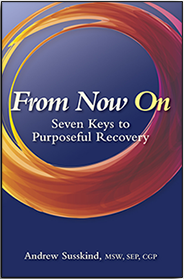Grief is a good thing. Don’t get me wrong. Grieving is really hard work, but ultimately it’s a path to better understand buried parts of yourself. In American culture, it’s taboo to spend too much time and energy
dwelling on loss. Instead, you’re encouraged to get over it and move on with your life. During the course of your recovery, you’ll face a series of losses, and each of them is a growth opportunity within itself. In spite of the heavy emotional work required, I invite you to explore and process your grief because it’s a prime opportunity to learn about a valuable part of yourself.
Doors Opening, Doors Closing
A lot of celebration takes place around new beginnings such as weddings and births, but the dying process and the grief that follows . . .
Continue reading...


